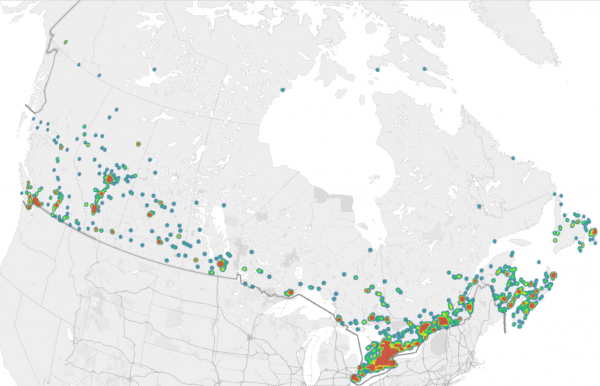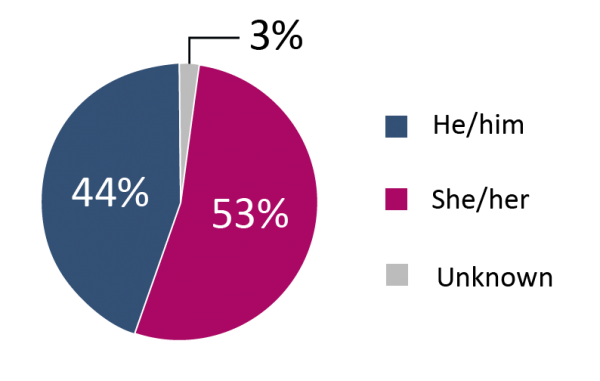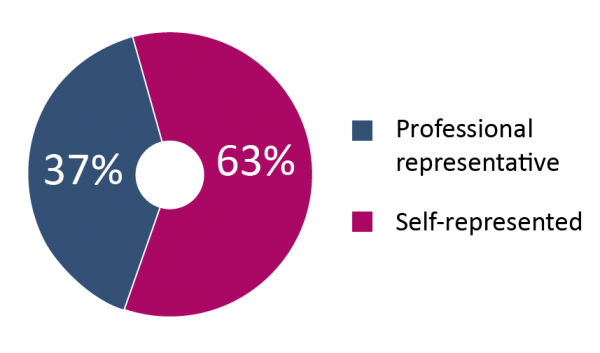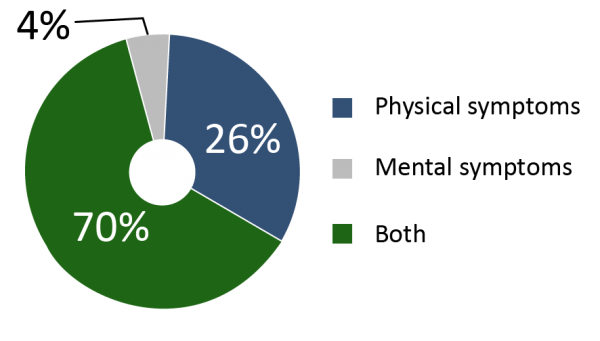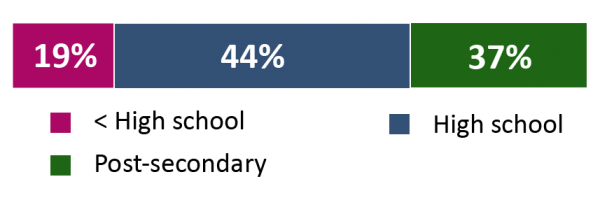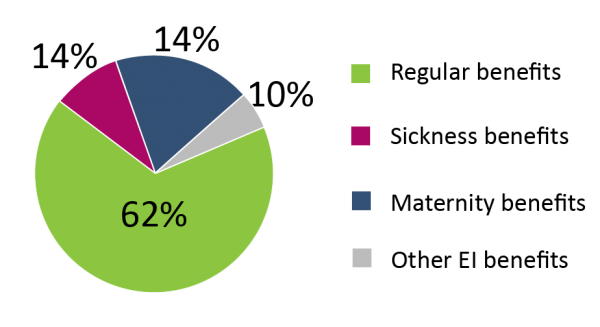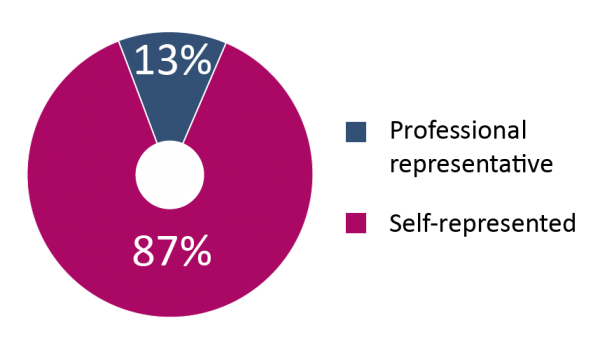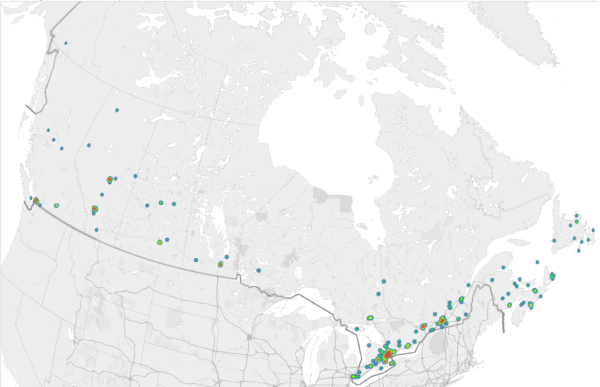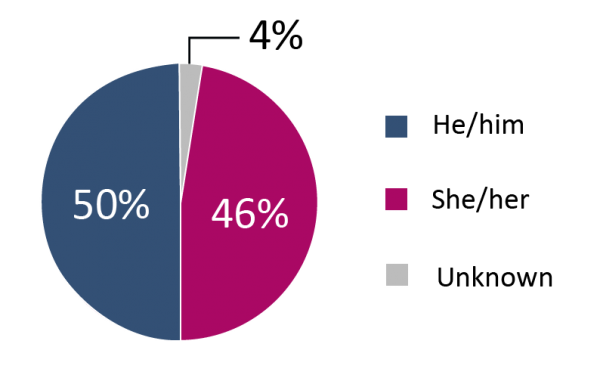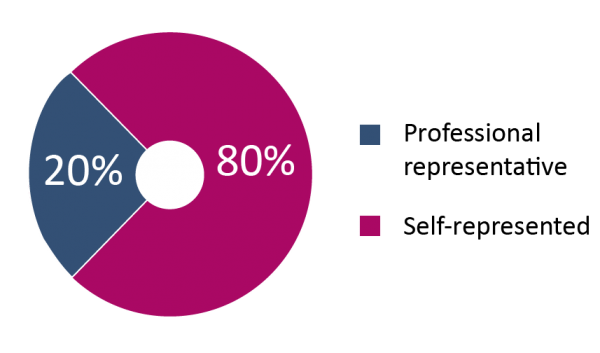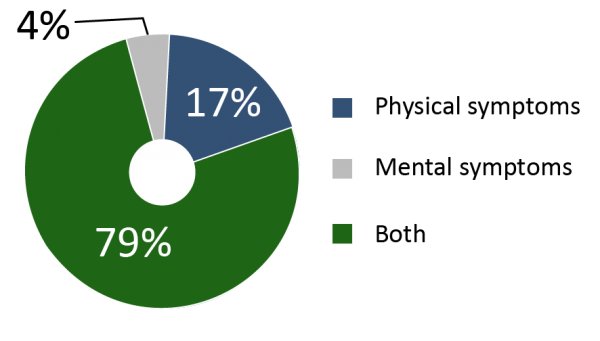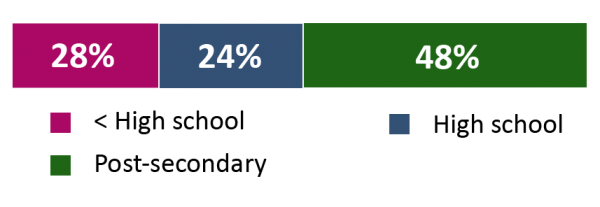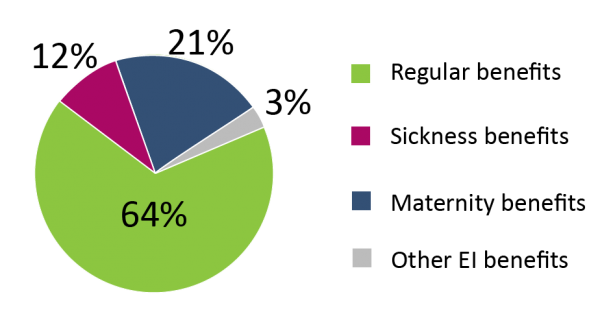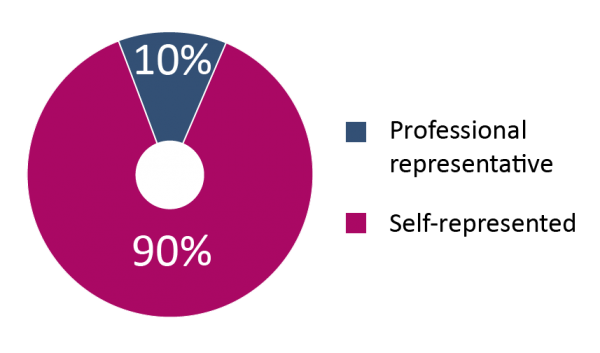Key demographics of Social Security Tribunal appellants
We know that an accessible justice system is user-centred. That’s why we wanted to learn more about the people who use our services to better support their diverse needs.
In August 2021, we looked at 480 of the 4,472 files opened over a one-year period from July 1, 2020 to June 30, 2021. We reviewed each file and collected demographic information, such as:
- ages
- pronouns
- education
- disabilities
Not all files had this data, but from what we found, we were able to make the following demographic profiles.
Key demographics of General Division appellants
Region
- Files were largely concentrated in southern Ontario; 51% of files were from Ontario.
- 1% of files were from outside Canada.
- 18% of Canadian files had rural postal codes. According to the Canadian Radio-television and Telecommunications Commission (CRTC)1, people who live in rural areas are more likely to have poor access to internet.
Region was calculated on the General Division caseload as a whole.
Pronouns used
Text version
He/him: 44%
She/her: 53%
Unknown: 3%
General Division – Income Security sample (179 files)
Benefit type
Text version
Canada Pension Plan disability: 85%
Old Age Security: 8%
Other Canada Pension Plan: 7%
The vast majority of Income Security files were Canada Pension Plan ( CPP ) disability benefit appellants.
Language
Text version
97% of files were in English
2% were bilingual
1% were in French
6% required interpreters
Representation
Text version
Professional representative: 37%
Self-represented: 63%
Of the self-represented appellants, 71% received the navigator service.
Canada Pension Plan ( CPP ) disability benefits
Nearly all Canada Pension Plan ( CPP ) disability benefit appellants described multiple medical conditions. 70% reported both mental and physical symptoms.
Text version
Physical symptoms: 26%
Mental symptoms: 4%
Both: 70%
Common descriptors of disabilities
Text version
- Anxiety
- Anxious
- Arm
- Arthritis
- Attacks
- Bend
- Bladder
- Bodily
- Breath
- Chronic
- Concentration
- Degenerative
- Depression
- Difficulty
- Disc
- Disease
- Disorder
- Fatigue
- Feeling
- Fibromyalgia
- Fingers
- Hand
- Headaches
- Injury
- Insomnia
- Issues
- Knee
- Legs
- Lift
- Limited
- Loss
- Memory
- Minutes
- Mobility
- Mood
- Neck
- Numbness
- Pain
- Panic
- Poor
- Post-traumatic
- Reaching
- Severe
- Shoulders
- Sitting
- Sleep
- Standing
- Stress
- Unable
- Walking
Age
75% of appellants were between the ages of 45 and 64. Data existed in 97% of files.
Text version
Average age: 53
less than 35: 5%
35-44: 12%
45-54: 32%
55-64: 43%
65+: 9%
Education
63% of appellants had not completed a post-secondary education. Data existed in 85% of files.
Text version
Below high school: 19%
High school: 44%
Post-secondary: 37%
General Division – Employment Insurance sample (129 files)
Benefit type
Text version
Regular benefits: 62%
Sickness benefits: 14%
Maternity benefits: 14%
Other Employment Insurance benefits: 10%
Language
Text version
74% of files were in English
26% were in French
5% required interpreters
Representation
Text version
Professional representative: 13%
Self-represented: 87%
Note: Applications for EI benefits rarely prompt for demographic information. As such, data on age and education were rare. Only 8% and 3% of the sample had data on these variables, respectively.
Accuracy statement
The General Division sample was drawn from files opened between July 2020 and June 2021: a total of 4110 files. 308 files were drawn for the sample, giving a margin of error of ±5%. General Division – Income Security alone has a ±7% margin of error, and General Division – Employment Insurance has a ±8% margin of error. Numbers may not add up to 100 due to rounding.
Key demographics of Appeal Division appellants
Region
- Files were largely concentrated in southern Ontario; 40% of files were from Ontario.
- 2% of files were from outside Canada.
- 13% of Canadian files had rural postal codes. According to Canadian Radio-television and Telecommunications Commission (CRTC), people who live in rural areas are more likely to have poor access to internet.
Region was calculated on the Appeal Division caseload as a whole.
Pronouns used
Text version
He/him: 50%
She/her: 46%
Unknown: 4%
Appeal Division – Income Security sample (85 files)
Benefit type
Text version
Canada Pension Plan disability: 58%
Old Age Security: 25%
Other Canada Pension Plan: 17%
Canada Pension Plan ( CPP ) disability benefit represents a lower proportion of Appeal Division – Income Security files than General Division – Income Security files.
Language
Text version
93% of files were in English
7% were in French
7% required interpreters
Representation
Text version
Professional representative: 20%
Self-represented: 80%
Of self-represented litigants, 57% received the navigator service.
Canada Pension Plan ( CPP ) disability benefits
Nearly all Canada Pension Plan ( CPP ) disability benefit appellants described multiple medical conditions. 79% reported both mental and physical symptoms.
Text version
Physical symptoms: 17%
Mental symptoms: 4%
Both: 79%
Common descriptors of disabilities
Text version
- Anxiety
- Anxious
- Arm
- Arthritis
- Attacks
- Bend
- Bladder
- Bodily
- Breath
- Chronic
- Concentration
- Degenerative
- Depression
- Difficulty
- Disc
- Disease
- Disorder
- Fatigue
- Feeling
- Fibromyalgia
- Fingers
- Hand
- Headaches
- Injury
- Insomnia
- Issues
- Knee
- Legs
- Lift
- Limited
- Loss
- Memory
- Minutes
- Mobility
- Mood
- Neck
- Numbness
- Pain
- Panic
- Poor
- Post-traumatic
- Reaching
- Severe
- Shoulders
- Sitting
- Sleep
- Standing
- Stress
- Unable
- Walking
Age
Appeal Division appellants skew older, with 44% being seniors. Data existed in 92% of files.
Text version
Average age: 60
Less than 35: 4%
35-44: 13%
45-54: 18%
55-64: 22%
65+: 44%
Education
52% of appellants had not completed a post-secondary education. Data existed in 59% of files.
Text version
Below high school: 28%
High school: 24%
Post-secondary: 48%
Appeal Division – Employment Insurance (87 files)
Benefit type
Text version
Regular benefits: 64%
Sickness benefits: 12%
Maternity benefits: 21%
Other EI benefits: 3%
Language
Text version
82% of files were in English
18% were in French
1% required interpreters
Representation
Text version
Professional representative: 10%
Self-represented: 90%
Of self-represented litigants, 55% received the navigator service.
Note: Applications for EI benefits rarely prompt for demographic information. As such, data on age and education were rare. Only 15% and 4% of the sample had data on these variables, respectively.
Accuracy statement
The Appeal Division sample was drawn from files opened between July 2020 and June 2021: a total of 362 files. 129 files were drawn for the sample, giving a margin of error of ±5%. Appeal Division – Income Security alone has a ±8% margin of error, and Appeal Division – Employment Insurance has a ±8% margin of error .

